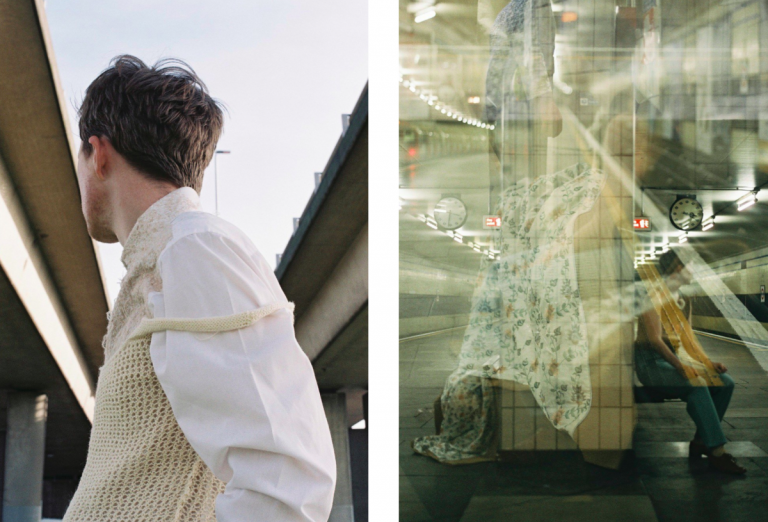What was the initial idea behind Loop Studio?
Ben: We launched back in 2018 to be a design and development destination for knitwear in London.
“If you don’t have the technique, you can’t create.” – Ben McKernan, Loop Studio
Nora: The majority of knitwear production doesn’t happen in the U.K., most factories are in Italy or outside of Europe. For designers, that makes it very difficult to communicate your vision. Because we experienced those difficulties ourselves, having worked in the industry, we saw a gap in the market. We wanted to be that bridge between design and manufacturing.
Ben: In knitwear, there is a merge between technique and creative design ‒ you can’t do one without the other. If you don’t have the technique, you can’t create.
Who comes to Loop Studio? Is it mostly independent designers?
Ben: We have a very wide range – anybody from students doing their MA collection to young graduates setting up their label, but also more high-end brands, like J.W. Anderson, who need help with sampling or swatches. For them it’s great that we’re in London because we’re reactive, we can do quick turnarounds.
Richard: We also do the things that most companies would say no to. Because we’re smaller, we have time to do the things that are more challenging or out of the ordinary. Then we’ll develop the technique that bigger companies need to do the production. Kiko Kostadinov came to us recently with a design. Another factory had said no to production, but once we proved it could be done, it was suddenly possible.
Oh, so sometimes designers come to you for the solution, not the execution?
Nora: Exactly, our ideas can be brought to other factories with similar machines.


















